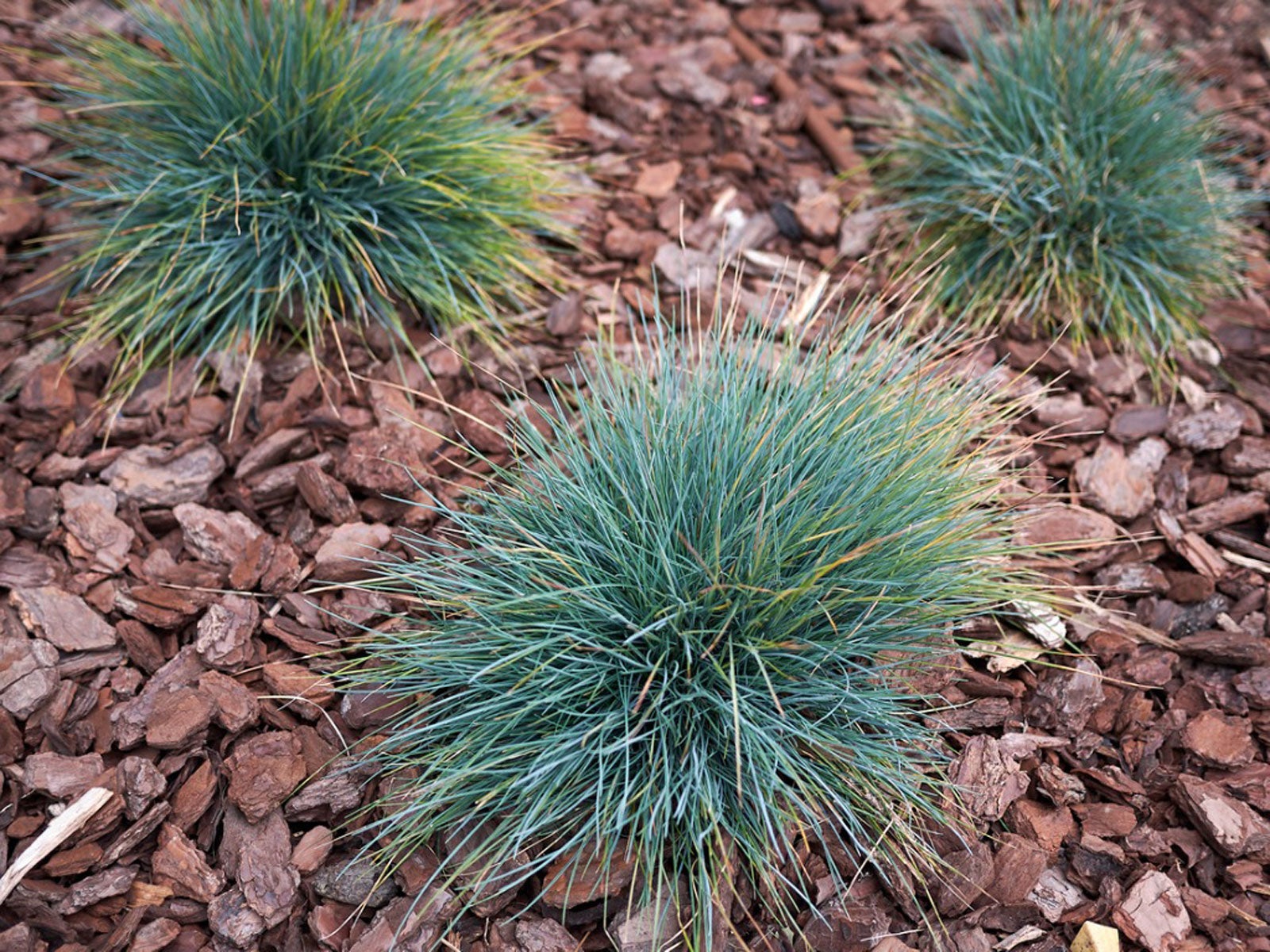Ornamental Grasses - Learn About Blue Fescue Growing Tips


Slender, wiry blades of blue characterize blue fescue plants. The ornamental grass is a tidy evergreen that is very tolerant of a wide range of sites and conditions. This plant is one of the “no fuss” plants perfect for the low maintenance garden.
Choose a sunny location when planting blue fescue. Follow a few blue fescue growing tips for a brightly colored, mounding accent plant for borders, rockeries or even containers.
About Blue Fescue Grass
Blue fescue plants are evergreen, but they do lose some of the older blades and grow new fresh deep blue leaves in spring. The older leaves adhere to the plant and spoil the bright coloration.
However, you can simply comb them out with your fingers. The grass forms low tight mounds and produces tall flower tipped stems in May to June. A key fact about blue fescue would be its zonal tolerance. It is suitable for USDA zones 4 to 9, but prefers areas without blistering hot summers.
Extreme heat causes the plant to die back. There are several varieties of blue fescue grass for the garden. The large blue fescue (Festuca amethystine) is hardier than the regular blue fescue (Festuca glauca). The plant also has several cultivars, such as the popular Elijah Blue. There is even a golden colored blue fescue.
Planting Blue Fescue
Place blue fescue grass in clusters along a border as a bright accent to other perennials. The grass is also an attractive foil for wide, leafy plants and provides contrasting texture. Wherever you decide to put the plant, it must have well-drained moist soil in a full sun position for best growth. The roots are not deep on this grass and they perform well for many seasons in containers, too, with Golden Barberry or other yellow or variegated plants.
Care of Blue Fescue Grass
Caring for blue fescue ornamental grass isn't difficult. Blue fescue grass needs average moisture, and will require supplemental water in summer. The plant may die back if the soils are too heavy and full of clay, so amend the area prior to planting with plenty of compost.
Gardening tips, videos, info and more delivered right to your inbox!
Sign up for the Gardening Know How newsletter today and receive a free copy of our e-book "How to Grow Delicious Tomatoes".
Blue fescue plants do not need fertilization as long as an organic mulch is used around the base of the grass. Keep the foliage looking its best by hand combing out the dead blades of grass and removing the flower heads. Remove the flower heads to help promote the tight mound shape of the plant. If you choose to leave the flowers, be aware the plant may produce some seedlings.
Blue Fescue Growing Tips
Older blue fescue plants tend to die out a bit in the center. One of the useful blue fescue growing tips is division. The dying plant simply needs to be dug up and cut in half. The center part will pull out by hand, leaving you with two plants full of healthy foliage. Division can be done every three to five years or as the plant begins to slow blade production in the center.

Bonnie Grant is a professional landscaper with a Certification in Urban Gardening. She has been gardening and writing for 15 years. A former professional chef, she has a passion for edible landscaping.
-
 Looking For Plants To Give You The Soft And Fuzzies? Try These 5 Fuzzy Leaf Plant Options
Looking For Plants To Give You The Soft And Fuzzies? Try These 5 Fuzzy Leaf Plant OptionsLovers of texture, drama, silver foliage and tactile plants will adore these special sensory garden additions. These fuzzy leaf plant options will leave you all aglow
By Susan Albert
-
 Get Ready For A Summer Of Hummers! Grow These Full Sun Hummingbird Plants and Flowers
Get Ready For A Summer Of Hummers! Grow These Full Sun Hummingbird Plants and FlowersIf you’re lucky enough to enjoy a sunny backyard, make sure you are maxing out on your pollinator opportunities and grow these full sun hummingbird plants and flowers
By Tonya Barnett